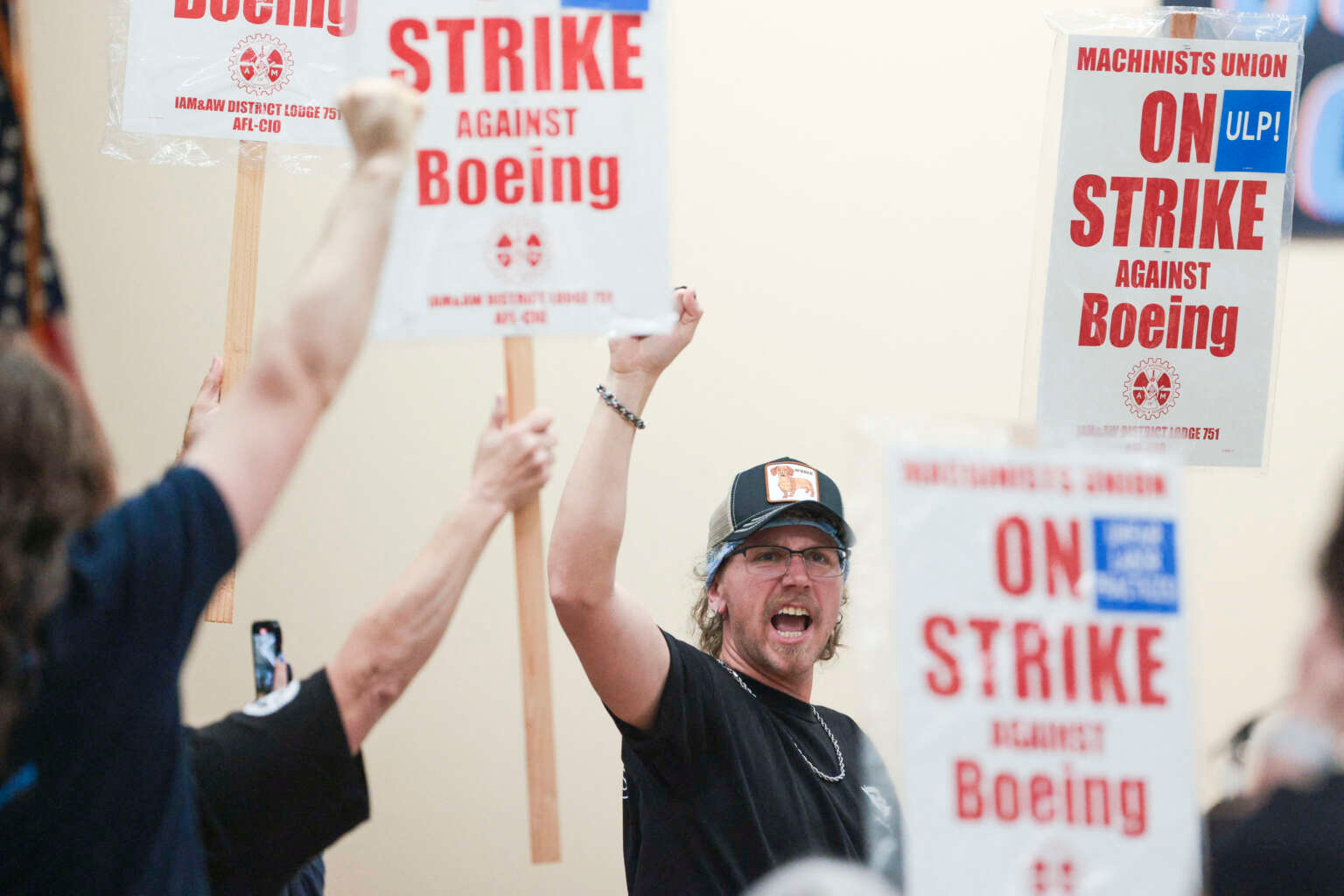
Union members react as Aerospace Machinists District 751 President Jon Holden announces that union members rejected a proposed Boeing contract and will go on strike, following voting results at their union hall in Seattle, Washington, on September 12, 2024. Jason Redmond / AFP via Getty Images
Boeing is one of the world’s largest aerospace manufacturers and defense contractors aiding the genocide in Palestine.
Seattle, September 23 (RHC)-- On September 18th, students walked out of a job fair at Cornell University, one of the elite universities that organized an unprecedented student movement in solidarity with Palestine and that also experienced a strike last month. Their motive was to bring attention to the presence of Boeing at the job fair as Boeing is one of the world’s largest aerospace manufacturers and defense contractors aiding the genocide in Palestine.
As part of the walkout, students also showed solidarity with the over 33,000 Boeing workers that are currently on strike for better pay and working conditions. They chanted: “We won’t work, we will fight; no more jobs for genocide!”
Political observers say that in addition to offering pitiful wages to their employees compared to the record profits of the company’s superiors, Boeing also plays a key role in supplying weapons to Israel — weapons that allow the state to continue its genocidal attack against Palestine. As the prospect of a regional war seems less and less out of the picture, Israel’s weapons have the potential to harm even more working and oppressed people in surrounding countries like Lebanon.
Therefore, by producing weapons that are helping to carry out a genocide, Boeing benefits from the exploitation of workers in the United States and the oppression of workers abroad. In that way, the struggle for Palestinian liberation is tied up to the struggle of Boeing workers against their bosses.
The Boeing strike is the largest strike so far in 2024 and comes at a time where more and more workers and youth are showing a willingness to fight within the labor movement. We can see this in the wave of unionizations at workplaces like Amazon and Starbucks and the uptick in strike activity, especially in important sectors, as the UAW strike showed last year.
Even within universities a dynamic new labor movement has emerged and is taking up unionizations, strikes, and experiences with rank and file organizing. Most recently,
Cornell workers went on strike to protest unlivable wages and treatment from the school, and many university workers showed solidarity with Palestine throughout the encampment movement.
One of the most important actions was the strike organized by the workers throughout the University of California system – one of the largest university systems in the country – to defend students and faculty who rose up in support of Palestine against attacks from their administrators and the police. Through these actions, we see how the unity between the student and labor movement is especially key.
The strategic power of the working class to “shut it down” can be deployed not only to fight for better wages, but also to fight for our democratic rights and against the oppression of other members of our class around the world. Throughout history, labor has played a decisive role in our struggles, even previously in the Seattle region itself, where the current Boeing strike is being held.
In 1919, Seattle workers organized a general strike and rocked the world by organizing a soviet in the form of a General Strike Council which democratically controlled the entire city for several days.
In our current context, the student movement is facing its own struggle with the development of an offensive against the Pro-Palestine movement in the universities, where administrators are taking repressive measures to silence the voices who speak out against the ongoing genocide.
Therefore, it is more important than ever for sectors of the student movement and the labor movement to unite their struggles. We must fight back against common enemies, like the Zionist bosses at Boeing, who super exploit workers and perpetuate oppression against Palestinians. We must also confront the bureaucracies within universities and unions who do everything within their power to hold our struggles back. We can and should impose this unity “from below” and study historical examples like the example of the Seattle soviet and even the recent rank and file assembly at CUNY, to draw inspiration for how we can make our own decisions and move our struggles forward.
As the students at Cornell showed us, students can play a role in building this united struggle against our oppressors and exploiters. Clearly, the student and labor movement are stronger together; we have the power to create more unity and continue showing up for exploited and oppressed workers around the world.

